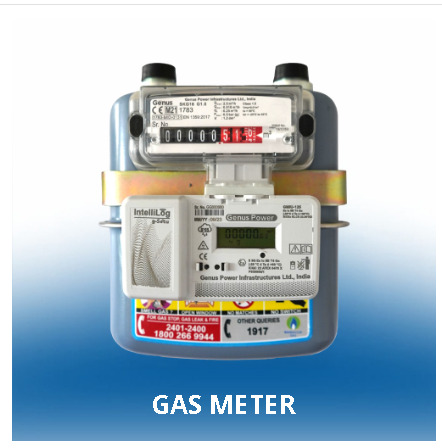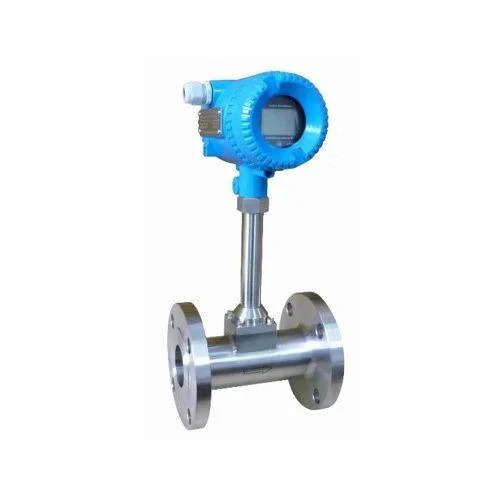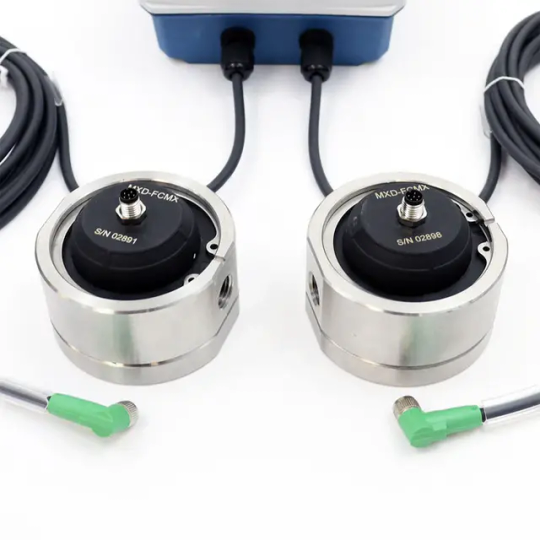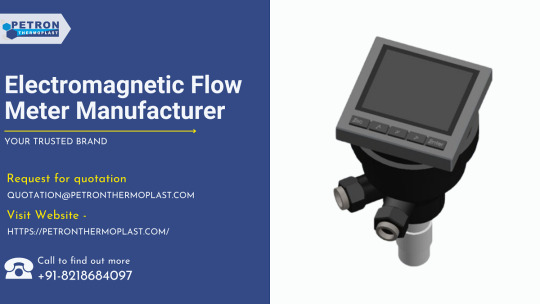#FlowMeter
Explore tagged Tumblr posts
Text
Factory-Ready Air Flow Meter for Compressed Air - PCD Flowmeter
Real-time air consumption data is now easy with Process Control Devices’ compressed air flow meter. Equipped with ±2% accuracy, RS485 MODBUS, and 4-20mA output, this air flow meter for compressed air is widely used in Indian plants. As a compact cfm meter for compressed air, it supports accurate audits and leak detection. We are recognized compressed air flow meter manufacturers across India.
#flowmeter#compressed air flow meter#flowmeter manufacturer#air flow meter for compressed air#cfm meter for compressed air#flowmeter supplier
0 notes
Text

Explore Genus Power's advanced Water & Gas Flow Meters designed for accurate measurement and efficient utility management. Discover reliable solutions for residential, commercial, and industrial applications.
0 notes
Text
Accurate Flow Measurement For All Applications — ADD VALUE Coriolis Flow Meter
Qingdao Add Value Flow Metering Co., Ltd. is a trusted manufacturer and supplier in pulp processing, petroleum & oil measuring, chemical processing and wastewater handling and commercial applications.
Here are the advantages of our ADD VALUE Coriolis mass flow meters.
High mass flow accuracy, measurement error is better than ± 0.1%;
High density accuracy, measurement error is better than ± 0.0005g / cm³;
High temperature accuracy, measurement error is better than ± 0.2 ºC;
Good zero stability to ensure long-term stable operation;
Fast response time, suitable for small batch and short time filling;
Wide turndown ratio, the turndown ratio can reach 20:1;
Long service life, product design service life is 10 years;
More warning functions.





0 notes
Text
Key Benefits of Using Orifice Flow Meters
In a world obsessed with innovation, it's easy to overlook the value of simplicity especially in industrial measurement. These days, flow meters come in all kinds of high tech Flavors ultrasonic, Coriolis, vortex... all promising next-gen accuracy with next-level pricing to match. But sometimes, going back to basics is exactly what your system needs. Enter the orifice flow meter a device so fundamentally sound, it's been relied on for decades, and for good reason.
Tired of overpaying for fancy meters that need constant care? Orifice flow meters deliver accuracy and reliability without the maintenance circus. Get a tailored solution today.
Orifice flow meters operate on the age-old principle of differential pressure. A precisely machined plate is placed in the path of the flow, causing a drop in pressure that’s directly proportional to the flow rate. No sensors embedded in the pipe wall. No moving parts whispering their way to a breakdown.

Just physics doing its thing reliably, repeatedly, and without fuss. And when installed properly, these meters deliver accuracy that's more than enough for most industrial processes and custody transfer needs.
What truly sets them apart is their ability to perform under pressure literally. They handle everything from high temperature steam to dense chemical slurries without losing their cool. Their rugged, minimalist design means less maintenance, fewer points of failure, and reduced downtime. You’re not just buying a meter; you’re buying fewer headaches for your maintenance team.
Unlike many of their sensor-packed competitors, orifice meters don’t flinch at dirty fluids or fluctuating pressures. They also happen to be very budget friendly. Let’s be honest not every application needs a lab-grade measurement device. For many utilities and industries, what matters is a dependable reading, repeatability, and compliance with standards like AGA-3 or ISO 5167. Orifice meters check all those boxes without burning through your budget.
Better still, they’re incredibly versatile. Whether you're metering natural gas through a transmission line, monitoring steam in a boiler feed system, or measuring water in a treatment plant, an orifice meter can be designed to fit. You can select the orifice plate type, tap configuration, and beta ratio to suit your fluid, pressure, and flow conditions. The result? A solution that isn’t just off-the-shelf it’s tailor-made for your needs.
Need help sizing the right orifice meter for your application? We’ll walk you through every detail from plate specs to compliance so you can measure with confidence. Connect with our experts today.
It may not be flashy, but the orifice flow meter is the kind of tool that gets the job done quietly, efficiently, and without drama. In a time when overengineering is often mistaken for progress, choosing a straightforward, proven, and cost effective solution can feel revolutionary.
0 notes
Text
High-Quality Flow Meters | Accurate Flow Measurement Solutions

Discover premium flow meters for precise and reliable flow measurement across various industries. Our range of flow meters ensures accurate readings for liquids, gases, and more, making them ideal for industrial, commercial, and laboratory applications. Whether you need electromagnetic, ultrasonic, turbine, or positive displacement flow meters, we provide advanced technology, durable materials, and exceptional performance. Shop now for the best flow measurement solutions.
0 notes
Text
Innovate systems is best Flow Meter Supplier, Flow Meter Manufacturer, Dealer, Exporter in Pune, Bangalore, Mumbai, Ahmadabad, Chennai, Gujarat, Hyderabad. We provideGas Flow Meter, Portable Ultrasonic Flow Meter, Oil Flow Meter, Vortex Flow Meter, Ultrasonic Level Transmitter, Mass Flow Meters, Online Digital Ph Meter, Hanna Ph Meter, Abb Electromagnetic Flow Meter, Coriolis Mass Flow Meter, and Hydraulic Flow Meterat best price
0 notes
Text
How to Select the Perfect Measurement Solution for Your Fluid Processing System

In today's industrial landscape, selecting the right fluid measurement solution can make or break your processing system's efficiency, accuracy, and overall operational costs. With countless options available in the market, finding the perfect fit for your specific application requires careful consideration of numerous factors. This comprehensive guide will walk you through the essential steps to ensure you make an informed decision when choosing measurement tools for your fluid processing needs.
Understanding Your Process Requirements First
Before diving into the various measurement technologies available, you must thoroughly understand what you're measuring and why. A successful fluid system measurement strategy begins with clearly defining your process parameters:
Process Media Characteristics
Viscosity (Is your fluid thick like honey or thin like water?)
Corrosiveness (Will your fluid potentially damage measurement equipment?)
Temperature and pressure ranges
Presence of solids or bubbles
Conductivity properties
Performance Requirements
Required measurement accuracy (±0.2%, ±0.5%, or ±1%)
Flow rate range (minimum and maximum expected rates)
Pressure drop limitations
Repeatability needs
Response time
Installation Environment
Available space constraints
Straight pipe run availability
Ambient conditions (temperature, humidity, vibration)
Hazardous area classifications
Taking the time to document these requirements will significantly narrow your options and prevent costly mistakes down the road.
Exploring Common Fluid Measurement Technologies
Each measurement technology has its unique strengths and limitations. Let's explore the most common options and when they shine:
Electromagnetic Flow Meters
Electromagnetic flowmeters excel when measuring conductive fluids. By generating a magnetic field across the pipe and measuring the voltage produced as the conductive fluid passes through, these meters deliver exceptional accuracy.
Best suited for:
Water-based solutions
Slurries and wastewater
Chemical processing
Food and beverage applications
Key advantages:
No moving parts means minimal maintenance
No pressure drop
Unaffected by fluid density, viscosity, or temperature
Available in sanitary designs for hygienic applications
However, electromagnetic flow sensors cannot measure non-conductive fluids like oils or gases, so they're not universal solutions.
Ultrasonic Flow Meters
Ultrasonic flow meters use sound waves to determine flow rates, either through transit-time or Doppler methods. The transit-time approach measures how long it takes for sound waves to travel between transducers, while Doppler systems measure frequency shifts caused by reflections off particles in the fluid.
Best applications:
Clean liquids (transit-time)
Dirty liquids with suspended particles (Doppler)
Large diameter pipes
Non-invasive measurement needs
Strengths:
Clamp-on options available (no pipe cutting required)
No pressure drop or flow obstructions
Suitable for corrosive applications
Bidirectional measurement capabilities
Ultrasonic flow meter accuracy can be affected by fluid consistency and pipe condition, so proper installation is crucial.
Coriolis Flow Meters
When ultimate accuracy is non-negotiable, coriolis flow meters often provide the solution. Using the Coriolis effect, these meters measure mass flow directly rather than volumetric flow, eliminating concerns about temperature and pressure effects on density.
Ideal for:
Custody transfer applications
High-value products
Multi-phase fluids
Applications requiring density or concentration measurement
Benefits:
Exceptional accuracy (typically ±0.1% to ±0.5%)
Direct mass flow measurement
Independent of flow profile and fluid properties
Can measure multiple parameters simultaneously (flow, density, temperature)
The primary drawbacks include higher initial cost and larger installation footprints, especially for larger pipe sizes.
Rotameter Flowmeters
For applications where simplicity, reliability, and visual indication are priorities, rotameter flowmeters remain popular choices. These variable area meters use a float in a tapered tube to indicate flow rate.
Commonly used for:
Low-flow applications
Local flow indication without power
Simple proportional control
Purge and blanketing systems
Advantages:
No power required for basic models
Visual indication without instruments
Simple operation and maintenance
Cost-effective for smaller applications
Accuracy tends to be lower than other technologies (typically ±2-5%), making rotameters less suitable when precision is paramount.
Critical Selection Factors Beyond Technology Type
While understanding the different measurement technologies is important, several other factors should influence your final decision:
Total Cost of Ownership
Initial purchase price is just one component of the total cost. Consider:
Installation complexity and costs
Power requirements
Calibration frequency and expense
Spare parts availability and cost
Expected service life
Maintenance requirements
A higher upfront investment in a premium flow meter might deliver substantial savings over its operational lifetime through reduced maintenance and higher accuracy.
Integration with Existing Systems
Your measurement solution should seamlessly integrate with your current control and monitoring systems:
Compatible output signals (4-20mA, HART, Fieldbus, etc.)
Communication protocol support
Software compatibility
Power supply requirements
Ensuring proper integration prevents costly rework and communication issues after installation.
Regulatory and Compliance Requirements
Many industries face strict regulatory oversight regarding fluid measurement:
Industry-specific certifications (FDA, 3A, EHEDG for food and pharma)
Hazardous area approvals (ATEX, IECEx, FM)
Custody transfer approvals (OIML, NTEP, MID)
Environmental compliance documentation
Non-compliance can result in production shutdowns, fines, or rejected products, making this a critical consideration.
Supplier Expertise and Support
The right measurement partner offers more than just hardware:
Application engineering support
Commissioning assistance
Training programs
Responsive technical support
Calibration services
Global presence for multinational operations
Working with experienced measurement solution providers like XINSIER TECHNOLOGY ensures you benefit from 15+ years of industry knowledge and support across 53 countries worldwide.
Decision-Making Framework: A Practical Approach
To systematize your selection process, consider implementing this step-by-step framework:
Document process requirements (fluid properties, accuracy needs, environmental conditions)
Screen technologies based on compatibility with your application
Evaluate qualified options using weighted criteria important to your operation
Request detailed specifications from shortlisted suppliers
Perform cost-benefit analysis including total cost of ownership
Check references from similar applications
Conduct site assessment to verify installation feasibility
This structured approach narrows options progressively while ensuring all critical factors receive proper attention.
Real-World Considerations From Industry Experience
After working with thousands of fluid processing systems across diverse industries, we've observed several practical considerations often overlooked during selection:
Future-proofing: Select measurement solutions that can accommodate potential process changes or expansions
Standardization benefits: Using consistent meter types across your facility simplifies maintenance and reduces spare parts inventory
Redundancy needs: Critical measurements might warrant backup measurement systems
Local support availability: Even the best technology fails without proper support infrastructure
Environmental impact: Consider energy consumption and end-of-life disposal impacts
Conclusion: Making Your Final Decision
Selecting the perfect measurement solution for your fluid processing system requires balancing technical requirements, financial considerations, and practical implementation factors. By thoroughly understanding your process needs, evaluating the strengths and limitations of different technologies, and considering the total cost of ownership, you'll be well-positioned to make an informed decision.
Remember that the cheapest option rarely delivers the lowest long-term cost, and the most expensive isn't automatically the best fit for your application. Instead, focus on finding the right match for your specific requirements while ensuring proper installation and maintenance.
With over 15 years of experience providing scientific and cost-effective measuring solutions, XINSIER TECHNOLOGY has helped thousands of facilities optimize their fluid measurement systems. Our team of specialists can guide you through the selection process to ensure you achieve the precision, reliability, and performance your operation demands.
Whether you need electromagnetic flowmeters for water treatment, ultrasonic flow meters for large pipelines, or coriolis flow meters for high-accuracy custody transfer applications, partnering with experienced measurement professionals ensures you'll get the perfect solution for your unique requirements.
0 notes
Text

Electromagnetic Flow Meter split type
If you are interested in the flow meter ,please feel free to contact me.
WhatsApp/Wechat:+8616638863586
0 notes
Text
Optimize Equipment Accuracy with Professional Flowmeter Calibration in Duba
Linkmarine offers professional flowmeter calibration services in Dubai, ensuring precise and reliable performance for your equipment. Our skilled team utilizes advanced techniques to deliver accurate calibration, catering to industrial, marine, and commercial applications. By maintaining the accuracy of your flowmeters, we help optimize efficiency, reduce errors, and ensure compliance with industry standards. Trust Linkmarine for tailored solutions that meet your specific needs. Connect with us today for expert calibration services!
0 notes
Text
Factory-Ready Air Flow Meter for Compressed Air - PCD Flowmeter
Real-time air consumption data is now easy with Process Control Devices’ compressed air flow meter. Equipped with ±2% accuracy, RS485 MODBUS, and 4-20mA output, this air flow meter for compressed air is widely used in Indian plants. As a compact cfm meter for compressed air, it supports accurate audits and leak detection. We are recognized compressed air flow meter manufacturers across India.
#compressed air flow meter#flowmeter#flowmeter manufacturer#cfm meter for compressed air#air flow meter for compressed air
0 notes
Text

Your Trusted Electromagnetic Flow Meter Manufacturer
When precision and reliability matter, trust Petron Thermoplast, the best Electromagnetic Flow Meter Manufacturer across the globe. Our flow meters ensure the perfect solution for your fluid measurement needs.
Visit Website - https://petronthermoplast.com/flow-meter-manufacturer/
Contact No. - +91-8218684097
Request for Quotation - [email protected]
#flowmeter#electromagneticflowmeter#industrialsolutions#fluidmeasurement#precisionengineering#industrialparts
0 notes
Text
OEM Coriolis flow meters from Add Value Flow Metering!
Add Value offers services on design and production of Coriolis flow meters as an OEM manufacturer and supplier.
With superior quality&service, and reasonable price, we hope to be your most reliable partner! Contact us!
E-mail: [email protected] WhatsApp/Skype: +86 198 6212 5430




0 notes
Text
Choosing Between Inline and Insertion Vortex Flow Meters
Vortex flow meters are widely used to measure the flow of liquids, gases, and steam. When selecting a vortex flow meter, one critical decision is whether to choose an inline or insertion model.
Each type has unique advantages, making them suitable for specific applications.
This blog will explain the differences between inline and insertion vortex flow meters, their pros and cons, and how to choose the best option for your needs.
What Are Inline and Insertion Vortex Flow Meters?
Inline Vortex Flow Meters
Inline vortex flow meters are installed directly into the pipeline, replacing a section of the pipe. They measure the flow by detecting the vortices created as fluid passes over a bluff body inside the meter.
Insertion Vortex Flow Meters
Insertion vortex flow meters are designed to be inserted into an existing pipeline through a small opening. They measure the flow by detecting the vortices within the pipe without requiring a full pipe replacement.

Differences Between Inline and Insertion Vortex Flow Meters
1. Installation
Inline Vortex Flow Meters: These require cutting the pipeline and installing the meter as a permanent part of the system. Installation is more complex and requires downtime.
Insertion Vortex Flow Meters: These are easier to install since they only require a small opening in the pipeline. They are ideal for retrofitting existing systems without significant modifications.
2. Pipe Size Compatibility
Inline Vortex Flow Meters: Suitable for small to medium-sized pipes where precise flow measurement is critical.
Insertion Vortex Flow Meters: Best for large-diameter pipes where installing an inline meter would be expensive or impractical.
3. Cost
Inline Vortex Flow Meters: Generally more expensive due to the meter’s design and installation requirements.
Insertion Vortex Flow Meters: More cost-effective, especially for large pipes or systems that need minimal disruption.
4. Accuracy
Inline Vortex Flow Meters: Provide higher accuracy because they measure the flow across the entire cross-section of the pipe.
Insertion Vortex Flow Meters: While accurate, their performance depends on proper placement within the pipe to capture representative flow.
5. Maintenance
Inline Vortex Flow Meters: Maintenance may require shutting down the pipeline, which can disrupt operations.
Insertion Vortex Flow Meters: Easier to maintain, as they can often be removed without halting operations.
Advantages of Inline Vortex Flow Meters
High accuracy for critical applications.
Ideal for small and medium-sized pipelines.
Durable design ensures long-term performance.
Advantages of Insertion Vortex Flow Meters
Lower cost for large pipelines.
Quick and easy installation.
Minimal downtime during maintenance or installation.
How to Choose the Right Vortex Flow Meter
1. Evaluate Your Application
Start by understanding your specific requirements:
What is the diameter of your pipeline?
Is high accuracy a priority for your application?
Will there be frequent maintenance or system changes?
2. Consider Installation Requirements
If you can afford pipeline modifications and need precise measurements, an inline vortex flow meter might be the best choice.
However, if you’re working with a large pipeline and want minimal disruption, an insertion model is more suitable.
3. Analyze Costs
Inline meters may be more expensive, but their accuracy can justify the cost in critical applications. On the other hand, insertion meters are budget-friendly, particularly for retrofitting large systems.
4. Think About Maintenance
If downtime is a concern for your operations, an insertion vortex flow meter is easier to maintain, as it can be removed and serviced without stopping the flow. Connect with your vortex flow meter manufacturer to get proper maintenance service.
When to Use Each Type
Choose Inline Vortex Flow Meters If:
Your pipeline has a small to medium diameter.
You need highly accurate flow measurement.
Your application involves permanent installations.
Choose Insertion Vortex Flow Meters If:
Your pipeline has a large diameter.
You want a cost-effective and minimally invasive solution.
You prefer easy maintenance and quick installation.
Conclusion
Choosing between inline and insertion vortex flow meters depends on your specific application, budget, and maintenance needs.
Inline models are ideal for high-accuracy measurements in small to medium pipelines, while insertion models are better suited for large pipes and retrofitting existing systems.
To explore reliable options for both inline and insertion vortex flow meters, visit Burak Metering. Their range of high-quality vortex flow meters ensures accurate and efficient flow measurement for various industries.
By carefully evaluating your requirements, you can select the right flow meter type to optimize your operations and ensure long-term success.
#flow meter#vortex flow meter#vortex flowmeter#digital vortex flowmeter#flowmeter#vortex flowmeter manufacturer#flowmeter manufacturer
0 notes
Text
Turbine Flow Meters: Principles, Operation | Macnaught USA

Learn about turbine flow meters, including how they work, their key components, and how they measure fluid flow accurately. This guide covers the principles behind turbine flow meters, how rotor speed relates to flow rate, and common applications in industries like water management, oil and gas, and chemical processing. Discover the benefits and limitations of turbine flow meters and why they're ideal for measuring the flow of clean, low-viscosity fluids.
0 notes
Text

🚀 Exciting Update! We've just completed the installation of a new electromagnetic flow meter! 🌊✨ This cutting-edge technology will enhance our measurement accuracy and efficiency, ensuring optimal performance and reliability in our operations. Stay tuned for more updates and insights on how this innovation is driving our success!
#🚀 Exciting Update! We've just completed the installation of a new electromagnetic flow meter! 🌊✨ This cutting-edge technology will enhance o#ensuring optimal performance and reliability in our operations. Stay tuned for more updates and insights on how this innovation is driving#Innovation#Technology#FlowMeter#Efficiency#electronics#engineering#visionworldtech#automation
0 notes